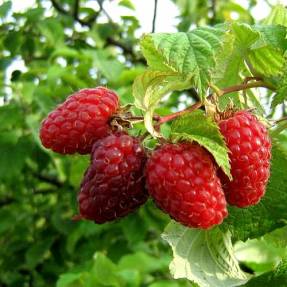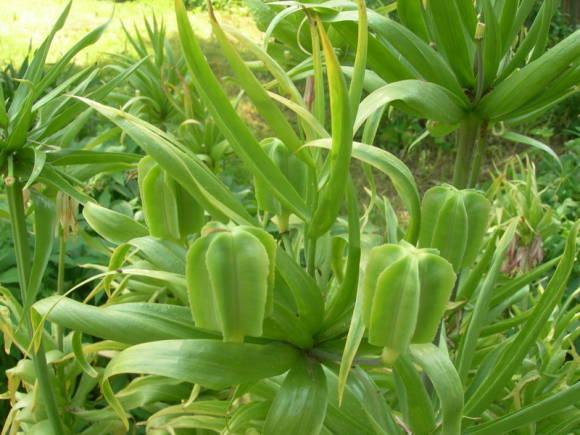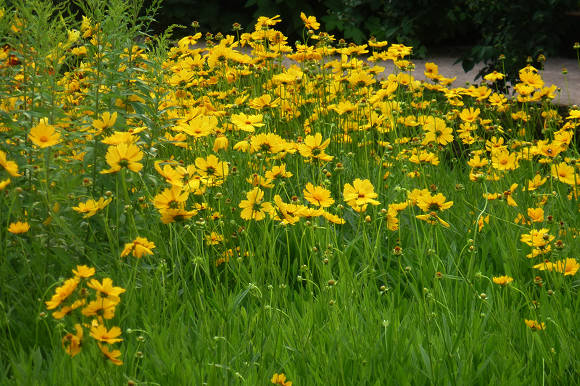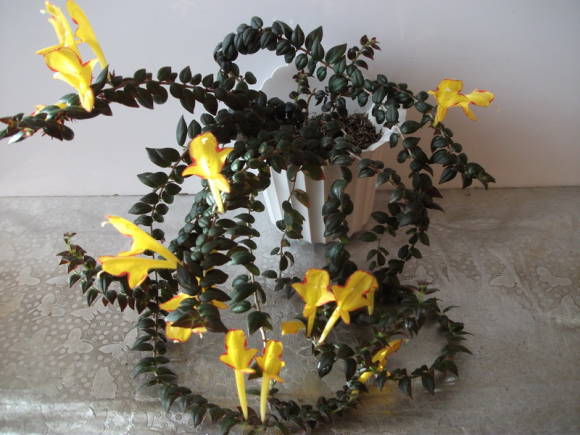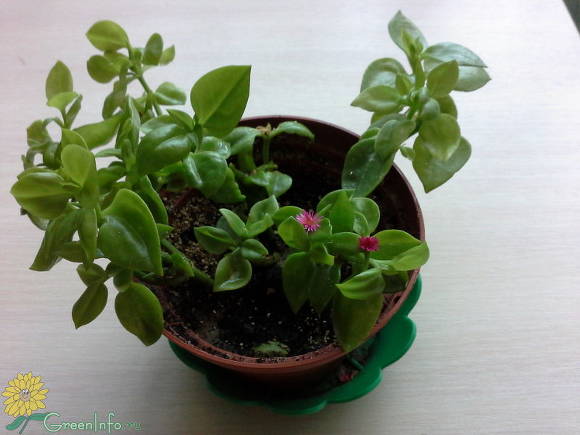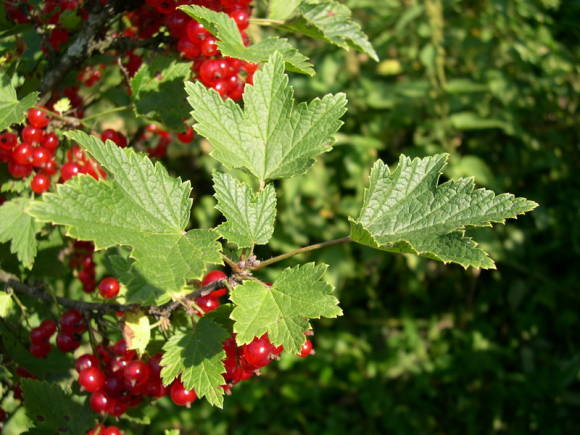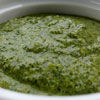On chilly gray winter days, it's always nice to have blooming orchids at home. Phalaenopsis have become one of the most popular orchids for quite some time, especially since most of them bloom at this particular time of the year. In the flower departments of supermarkets, you can find blooming hybrid phalaenopsis of different colors: white, pink, yellow, speckled ... However, despite all this diversity, for some lovers they all begin to seem similar to each other. It is for such orchid growers that there are several phalaenopsis species blooming in January and February, which can pleasantly diversify commercial hybrids.

Phalaenopsis Schiller(Phalaenopsis schilleriana) and Phalaenopsis Stewart(Phalaenopsis stuartiana) - endemic to the Philippine Islands. Both species are a delightful sight when in bloom.
These phalaenopsis are distinguished by very abundant flowering and can often have up to 100 or more flowers on adult plants. There are reports of plants with several hundred flowers. In 1869, an English florist brought a blooming specimen of Schiller's phalaenopsis with 120 flowers to an exhibition in St. Petersburg, and in 1875, in Lady Ashburton's greenhouse, the phalaenopsis of this species bloomed with 378 flowers. Yet even in a non-flowering state, both of them look extremely attractive thanks to their leaves with a beautiful marble pattern and airy, silvered roots. Lovers of rarities can be recommended to search for selected and polyploid forms.

Phalaenopsis Schiller was described by Reichenbach in 1860. The species is named after the consul Schiller, who acquired several plants in Manila two years earlier.
Weakly fragrant flowers are usually light pink, but can vary in color from dark pink, pink with a smooth transition to white along the edge of the petals to pure white, ranging in size from 6 to 9 cm in diameter. The base of the lip and the lower lobes of the sepals are covered with dark spots. The column is bright yellow. The branchy peduncle reaches 120 cm in length and can grow vertically, horizontally or downward. If a growing peduncle is tied to a stick, then the growing lateral branches tend to bend in the form of an arch, giving the flowering plant an unusually attractive appearance. An adult plant can grow two, three, and sometimes four peduncles at the same time. The leaves are a real decoration of this plant: dark green, with an irregular silvery-gray marble pattern, most often manifested in the form of transverse stripes on the top, and purple-red on the bottom. In the Philippines, this plant is called "tiger", referring to the tiger color of its leaves. Leaves are oblong-elliptical, fleshy, up to 45 cm long. Numerous greenish-silvery roots are flat, and not round, as we are used to seeing in other Phalaenopsis.

In nature, the species is found mainly on the island of Luzon, south of the city of Quezon City (Philippines), at an altitude of 0 to 500 meters above sea level. These orchids grow high in tree crowns, so they can be grown in brighter light throughout the year than most other Phalaenopsis. During the period of active growth from spring to autumn, plants are regularly watered and fed once every one to two weeks with a solution of a balanced fertilizer for orchids. If leaf growth slows down noticeably in winter, keep the plant a little drier, but never let it dry out completely. In places of natural growth, only a few millimeters of precipitation may fall during these months, but heavy fogs are very frequent, so it is useful to regularly spray the roots with a spray bottle. Reduce or eliminate feeding and keep plants in lighter conditions during this period.
Phalaenopsis Stewart - a close relative of Phalaenopsis Schiller, and outwardly the plants are very similar to each other.The peduncle is also highly branched and multi-flowered. The species was described by Reichenbach in 1881 and named after Stuart Lowe. Flowers 3-6 cm in diameter, white with numerous purple-red spots on the lower half of the lateral sepals and lip. Some clones have sepals so strong that they appear to be solid purple in color. In the natural variety "speckled" (punctatissima), in addition to the usual color, the spots completely cover both the sepals and the petals.

This species is found in the northern part of the island of Mindanao (Philippines). Illumination can be stronger than most other phalaenopsis. Being a representative of a warm temperature group, it requires daytime temperatures from +24 to + 30 ° С or slightly higher, nighttime temperatures should not be lower than + 18 ° С. If in winter the nighttime temperature drops to +13 - + 15 ° С, the difference between the average nighttime and daytime temperatures should still be at least +4 - + 6 ° С. In places of natural growth, the greatest amount of precipitation falls precisely in the winter months, however, it is not recommended to reproduce this when cultivating plants at home.
Keep the substrate constantly moist and reduce some light exposure in winter. Feed the plants regularly with a balanced orchid fertilizer solution during the vigorous spring to fall season, and cut back in half during the winter months. An interesting note: Stewart's phalaenopsis is known for forming babies on roots that have grown outside the pot and themselves have grown, for example, to a shelf. When these babies are old enough, they can be carefully separated and planted in separate pots.

Both of these species can be grown in regular pots, epiphyte baskets or on blocks. In the pot culture, pieces of fine and medium-sized pine bark are used as a substrate, together with perlite and tree fern roots as possible additives. To increase the moisture content, you can add sphagnum moss or high peat to the substrate. When planting, the plant is placed in the center of the pot slightly obliquely. Transplanting is best done in the spring after flowering, when the roots begin to grow actively. These orchids can also be grown in the crushed roots of tree ferns or osmundas, as was the custom in the good old days. Osmunda baskets are the lightest planting substrate, but sphagnum moss, tree fern or pine bark can be used with success. Tree ferns and pieces of pine bark tend to fall through the planks at the bottom, so a basket with small gaps between the planks is much more convenient. Before use, it is advisable to pre-soak osmunda and sphagnum moss in warm water to make the material more convenient for use and remove dust and dirt from it.
The plant basket can be hung horizontally or slightly tilted. Suitable blocks for planting plants are pieces of cork oak or pine bark, plates (blocks) of pressed roots of tree ferns, or even large pieces of osmund. On the block, the plant is fixed in such a way that its top with the growth point is obliquely downward - this will avoid water ingress into it when watering. Some hobbyists plant several plants on one block at once, which makes it possible to get an additional effect during flowering and save space compared to a single planting. The roots of these two species have a tendency to "travel", i.e. grow freely in the air in search of support, regardless of whether they are grown in pots or on blocks, so frequent spraying with water from a sprayer is recommended.
